Diversifying the Workforce for Tomorrow's Jobs
Under Never Settle, the UA has introduced new charges to complement historic efforts for pipeline and workforce development around the STEM fields, and the University is working to ensure diverse representation.
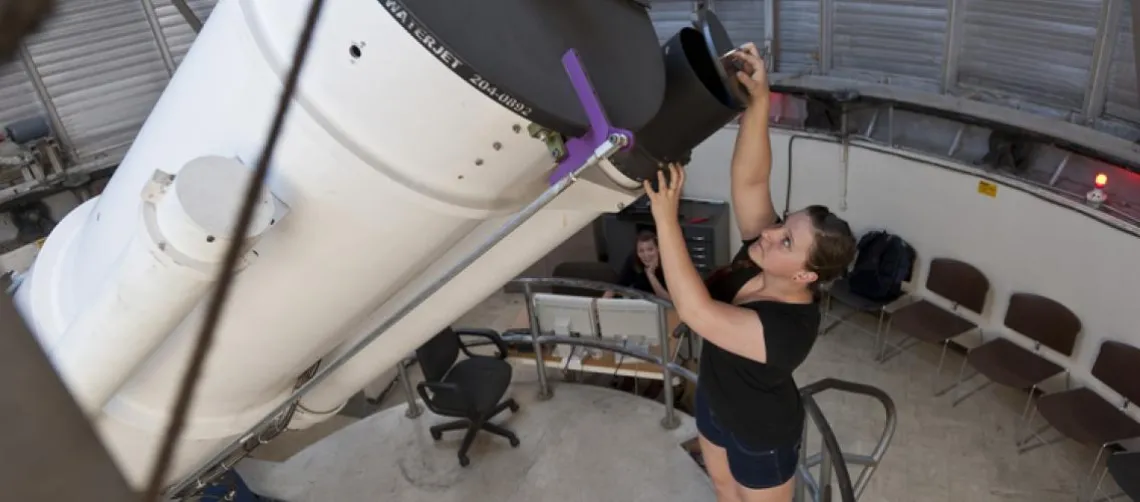
As the nation works to educate and graduate an additional 1 million students in the high-demand science, engineering, mathematics and technology fields in the next decade — a priority the Obama administration announced in 2012 — the University of Arizona has taken on the charge.
Disparities in STEM are well-documented. Not only are women and members of certain ethnic and racial groups underrepresented in STEM fields, but they most often are concentrated in lower-paying technical jobs, according to a Department for Professional Employees report relying on U.S. Bureau of Labor Statistics data.
However, the UA is improving student diversity and retention in STEM to help balance representation in the STEM workforce. For example, since 2006, the UA increased the percentage of women earning bachelor's degrees in STEM from 13.7 percent to 15.7 percent, said Gail Burd, the UA's senior vice provost for academic affairs.
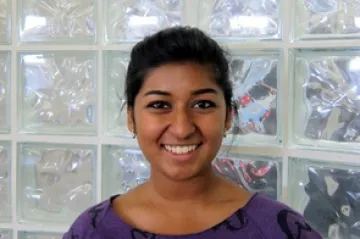
"Since my various experiences in science have allowed me to develop different perspectives as a young scientist, I feel confident about approaching my new project," says UA undergraduate researcher Shaina Hasan. (Photo courtesy of the UA Undergraduate Biology Research Program)
Earlier this month, France Córdova, director of the National Science Foundation, a major funder of UA research, visited the campus to learn about its world-renowned research in the planetary and physical sciences and about efforts to improve STEM education, student retention and workforce development.
During her visit, Córdova met with administrators and key researchers and also visited Biosphere 2, the Laboratory of Tree-Ring Research, the Richard F. Caris Mirror Lab, the Center for Integrated Access Networks and the iPlant Collaborative.
The visit came just weeks after Córdova had presented NSF's 2016 fiscal year budget request, in which she detailed priorities to support initiatives that catalyze improvements in STEM diversity across the nation.
In addition to improvements in graduating women in STEM, the UA is enhancing its support for students who are from traditionally underserved and underrepresented groups. For example, in 2006, 13.9 percent of Hispanic students who graduated with bachelor's degrees were in STEM. That became 17.4 percent in 2015.
France Córdova, director of the National Science Foundation, visited the UA in mid-February to learn about the institution's research initiatives and also its priorities in diversifying the STEM fields, a priority she shares at the national level. (Photo: John de Dios)
Research indicates that individuals from underserved groups often lack role models, mentoring and support, and also may be discouraged from continuing their studies or work in STEM.
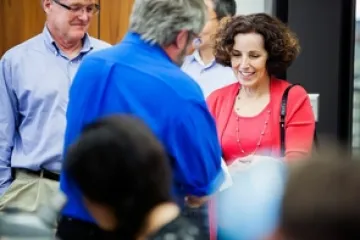
"Children are naturally scientific — they want to see how things work," Burd said. "The sense of discovery is a natural phenomenon for them, and we want to maintain that sense of excitement about learning new things and seeing how things work."
Burd also is principal investigator on the UA's STEM-focused Association of American Universities grant, funded by the Leona M. and Harry B. Helmsley Charitable Trust, and is leading the way on a major STEM reform initiative.
"STEM is hard. It's very quantitative, and math is a challenging subject," Burd said. "But we need to help students in their STEM classes and maintain their interest all the way through to graduation."
Campuswide Efforts Promote STEM
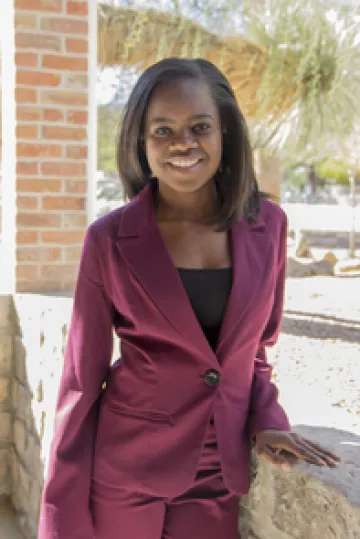
The UA's ASEMS program is important to retaining new students in STEM programs. "I have gained much more than I could have imagined through my involvement with this program," says Kendall Stokes, a systems engineering sophomore who, through the program, landed an internship with the Georgia Tech Manufacturing Institute. (Photo: Beatriz Verdugo/UANews)
Shaina Hasan has long had an interest in scientific research and, through her involvement in undergraduate research at the UA, has become intent on establishing medical clinics while researching infectious diseases and working in rural communities.
Through programs such as the Undergraduate Biology Research Program, or UBRP, and Biomedical Research Abroad: Vistas Open, or BRAVO!, Hasan has volunteered with doctors and pharmacists in Panama and Ghana, and also investigated plant peptide hormones to understand how roots develop.
"I think a large reason why I continue to participate in scientific research is because the lab has always been the place where I learn the most," said Hasan, who is majoring in biochemistry and also molecular and cellular biology.
Hasan, also a UA Beckman Scholar, has traveled to Singapore to conduct research on interaction between proteins in support of a research program aimed at improving therapeutic treatments for cancer.
"I can actually see its practical application through scientific research," Hasan said. "In fact, a large reason why I am successful in my classes is because of the knowledge I gain from my experiences in the lab and the lessons I learn while working on independent projects. I know I am capable of overcoming obstacles and gaining insights into my work — this is what I can contribute to the scientific community."
UBRP and BRAVO! are among numerous examples of pipeline-building programs at the UA.
The UA Graduate College's Undergraduate Research Opportunities Consortium supports a range of programs, including the Summer Research Institute and Minority Access to Research Careers. Other programs, including the Native American Science and Engineering Program, Women in Science & Engineeringand KEYS, or Keep Engaging Youth in Science, also support students well before they reach college.
"If I hadn't joined UBRP, I probably wouldn't have highly considered going into scientific research because I wouldn't be sure how rewarding it could be," says Victoria Farrar, a UA Honors College senior studying chemistry and ecology and evolutionary biology. (Photo: Beatriz Verdugo/UANews)
The UA also has a strong track record of enrolling and graduating American Indian students at the baccalaureate, master's and doctoral level.
Led by the UA, the Sloan Indigenous Graduate Partnership also involves the University of Alaska, the Montana University System and Purdue University in expanding the recruitment and support of American Indian students in STEM.
More than 700 undergraduates and about 200 graduate and professional American Indian students attend the UA, which is the nation's top producer of American Indian doctoral degree recipients, said Maria Teresa Velez, associate dean of the UA Graduate College.
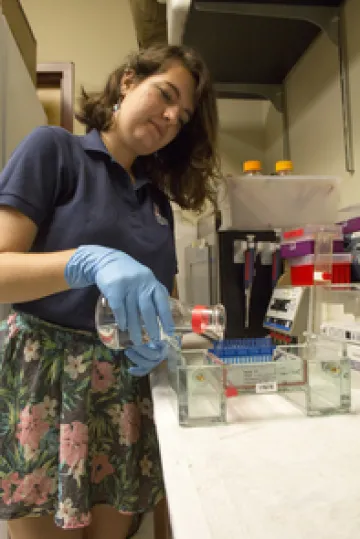
The benefits of a more diversified workforce are expansive, allowing for the introduction of new ideas and the involvement of historically underserved populations, said Velez, who is the principal investigator of numerous UA programs supported by federal agencies.
"We need them in academia, in high levels of government, in research and discovery," Velez said. "We need their expertise and their particular point of view to enhance science and technology."
Supporting Students Throughout Training
Not only do students need early exposure to the STEM fields, but they also need academic and social support during their studies. Research indicates that this is especially true for women and students from certain racial and ethnic groups.
The UA's Arizona Science, Engineering and Mathematics Scholars, or ASEMS, program does just that, with a focus on recruiting students, placing them in internships and retaining them in STEM through their degree programs.
"We know that if you give a student encouragement and support in the beginning, and steer them in the right direction, it is helpful," said Frans Tax, a molecular and cellular biology professor and one of the faculty who helped start the ASEMS program. "Our success is that our students stay in STEM."
The program, which recently selected its fifth cohort of students, offers structure immersion, with social and academic support, for new UA freshmen and sophomores. To date, the program has supported 103 students in partnership with others, including the Colleges of Engineering, Science, and Agriculture and Life Sciences, and also the recently renamed Office for Research & Discovery.
In the program, students are paired with peer advisers and also complete coursework that covers success strategies, career options and research in STEM. Also, students regularly learn about University research and internship opportunities by interviewing graduate students and shadowing faculty members and graduate students in laboratories.
"Students may not understand what resources we have here, or how to access them," said Kimberly Sierra-Cajas, director of the UA Office of Undergraduate Research. ASEM Scholars is currently raising funds to be able to increase the number of students involved in the program.
Of the first cohort of 28 students, 22 already have graduated — that represents 78.5 percent of the original cohort graduating with STEM degrees within 4.5 years — and eight are now pursuing graduate studies. Among the students in the first cohort, about 75 percent were engaged in research after their involvement in the program.
Through her involvement with ASEMS, Candice Eastman earned an research position in the lab of Jon Njardarson, an associate professor of chemistry and biochemistry.
Eastman's research focused on analyzing the structure of FDA-approved drugs to contribute to improvements in drug design and development. During the fall of 2014, Eastman co-authored a research paper on the topic with Njardarson and Brandon Smith, a graduate student of chemistry, which was published in the Journal of Medical Chemistry.
"I love this program," said Eastman, a nutrition and pre-pharmacy junior who plans to pursue graduate studies in pharmacy. "I am interested in research because it has given me a background to understand future developments and have an idea where the pharmaceutical industry is heading."
Another ASEMS student, Kendall Stokes, said it has been especially helpful to connect with other STEM students and to be supported in her academic program. Stokes said she is grateful for the program's requirement that students attend regular office hours with faculty and the program's staff.
"I have gained much more than I could have imagined through my involvement with this program," said Stokes, a systems engineering sophomore who, through the program, landed an internship with the Georgia Tech Manufacturing Institute to provide real-time monitoring of sensors.
"The interaction with our own professors catapulted me into an entirely new world. I realized how awesome so many of them are and what incredible resources they can be," Stokes said. "For every professor or individual who has helped me get to where I am, I'd like to extend a thank you. I am really appreciative of the positive impact they have had on my life and my experiences."

